
|
For 35 years the Padres were banished to the outskirts of San Diego, playing in a stadium built for football. In fact, of all the multipurpose stadiums that hosted Major League Baseball and the NFL, only the Padres played second fiddle to a football team when it came to scheduling priority.
That all changed in 2004, when San Diego opened a downtown ballpark. Petco Park was built at a cost of $456.8 million on 18 acres of land in the heart of downtown San Diego. Very few ballparks in the Major Leagues can boast of such a prime location, as Petco Park was beautifully woven into the fabric of the city and is surrounded by the skyscrapers of the San Diego skyline. Constructed of materials designed to reflect the local landscape, Petco Park has a sandstone and stucco exterior that was patterned after the sandy colored San Diego cliffs and beaches. Certain parts of the exterior, such as the staircases between the lower and upper decks, look like bunkers, befitting the large contingent of military stationed in the area. All exposed steel is painted white (think sailboats and ocean whitecaps) and all seats are painted blue (like the ocean). The San Diego friendly design shows off the best the city has to offer and some local icons can be seen from various points in the ballpark. The Coronado Bridge runs parallel to Petco and is easily seen from the upper deck concourse, as is the San Diego Bay. The hilltop of Balboa Park, home to the San Diego Zoo, peeks through the skyscrapers beyond center field. San Diego is renowned for its leisurely lifestyle and one of Petco Park’s signature features, the Park at the Park, is a year-round destination for baseball fans and local citizens.
A Park Pass, as the Padres refer to them, is just $5 and many fans bring beach towels to plop down in the grass. Most of the “seating” is obstructed view, as the batter’s eye blocks much of the playing field. The Padres recognized this and added a large screen TV to the back of the batter’s backdrop so fans in the park can follow the action. The park isn’t of much use to hardcore baseball fans, but a perfect place for casual fans and families to spend an afternoon. The lawn seating in the Park can accommodate approximately 2,000 fans, so the ballpark’s actual capacity is greater than the listed 42,445 fixed seats. The Padres have some innovative standing room options, highlighted by the “beach” in center field. The beach is a sand-covered section in front of the amphitheater style bleachers where fans can watch the game directly behind the glass paneled outfield fence. One of the most unique vantage points in baseball, fans sit on the sand floor during the game so they won’t block the view of the fans sitting in the bleachers directly behind them. From a distance (and on TV) it looks like fans are standing in the two sections of bleachers, which actually have booster style seats that are first come, first served. The only brick found inside the ballpark is a dandy. The century-old Western Metal Supply Company building, originally scheduled for demolition to make way for Petco Park, was preserved and incorporated into left field. The four-story brick building is the ballpark’s most striking architectural feature and its focal point. The Western Metal Supply Co. building serves many uses at Petco. The left-field foul pole is attached to it. The Padres Team Store is in its first floor and has an entrance to the Knothole Gang-type standing room area in left field. Suites are on the second and third floors and a restaurant is on the fourth floor. Private parties are held on the building’s roof, which has small sections of bleacher seats. The other noticeable private party area at Petco Park is directly behind the Padres bullpen, where a multi-leveled picnic terrace prevents regular fans from getting close to the bullpen, as has become the custom at most new ballparks. The bullpen set-up is actually quite unique at Petco, as the home team definitely has an advantage. The Padres bullpen is large and elevated in left-center field, but the visitor’s bullpen is not behind the outfield fence. Instead, it’s in foul territory down the right field line, which is reminiscent of where bullpens were located in the cookie-cutter donuts of yesteryear. The Padres have retired four numbers in their four-decade history, and those numbers join Jackie Robinson’s #42 atop the batter’s backdrop in center field. Plaques of those players - Steve Garvey (#6), Tony Gwynn (#19), Dave Winfield (#31), Randy Jones (#35) – are on a garden level concourse behind the center field fence, which looks like a small-scale version of Yankee Stadium’s Monument Park. To keep with up the game just look to left field, where a 30 by 53 foot LED video board, dubbed FriarVision, towers above the seats. A 34 by 80 foot matrix scoreboard above FriarVision displays all the necessary game information. The matrix out-of-town scoreboard is attached to the right field wall. The main grandstand of the ballpark is split into the standard three levels (lower, club, upper), but moving about them is not normal. Tunnels connect certain lower level sections - whether they were designed to mimic San Diego’s sea caves I’m not sure. Elevators with attendants provide one option to reach the upper deck. Staircases are another. Petco’s staircases do have windows, unlike the stairs you must climb in Houston. The seating in the upper deck is split between infield and outfield sections thanks to a pair of multi-purpose sandstone colored light towers. The 200-foot towers each house three levels of luxury suite lofts and one vertical bank of lights. The lower level concourse is open and fans visiting concession stands throughout the ballpark are able to easily keep up with the game thanks to 744 televisions (244 high-definition monitors plus 500 standard TVs). More than 500 computer-controlled speakers deliver sound wherever fans are at. The actual playing field is best described as cavernous and Petco Park is the best pitcher's park in Major League Baseball due to its dimensions. At 396 feet, center field is actually closer than the power alleys (401 in left, 400 in right), a rarity that makes home runs scarce and low scoring games the norm. As the Padres state on their website, Petco Park is “a relaxed yet dynamic atmosphere that reflects the San Diego lifestyle.” That’s a fitting description, as it really is an innovative ballpark with plenty of local flair, and as much a part of the vibrant downtown atmosphere as any in baseball -- so much so that the skyscrapers beyond right field have bleachers on top of them! The home of the Padres is open and inviting with pockets of exclusivity, just like the city itself. San Diego may be a town that’s never won a major professional championship, but with Petco Park its citizens have a world class sporting venue they can be proud of. Western Metal Supply Co. Building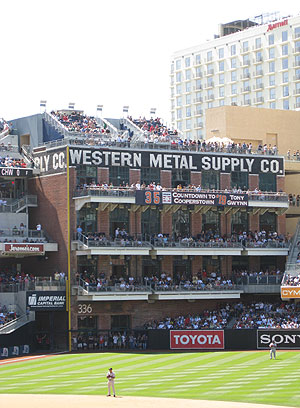 "This building is the magnet for Petco Park. People are just drawn to it," Steve Violetta, the Padres' vice president of business operations told The San Diego Union-Tribune when the ballpark opened. "It's always held that promise to become for San Diego what the warehouse is to Camden Yards, what the bleacher seats are to Wrigley Field or the Green Monster is to Fenway Park. It's a credit to the people who recognized early on just how much of a focal point this building could become to the ballpark."
"This building is the magnet for Petco Park. People are just drawn to it," Steve Violetta, the Padres' vice president of business operations told The San Diego Union-Tribune when the ballpark opened. "It's always held that promise to become for San Diego what the warehouse is to Camden Yards, what the bleacher seats are to Wrigley Field or the Green Monster is to Fenway Park. It's a credit to the people who recognized early on just how much of a focal point this building could become to the ballpark."
The Western Metal Supply Company building was a historic San Diego landmark long before Petco Park opened. The four story building - the only brick in the ballpark - was designed by Henry Lord Gay, founder of the American Institute of Architects, and opened in 1909. The building served as the warehouse and headquarters of the Western Metal Supply Company, which began supplying metal goods in 1898. They filed for bankruptcy in 1975 and vacated the building, which eventually was registered as a historical site. By 2001 the 51,400 square foot building was used primarily for storage and a tuxedo shop occupied the ground floor. Since it was made of unreinforced brick and heavy timber, the building was going to be destroyed to make way for the ballpark until the Padres' architectural team decided to renovate and incorporate it into Petco Park. In order to be saved, the Western Metal Supply Co. building underwent major structural renovation, with concrete being added to reinforce the brick walls and floors. It was also seismically strengthened to meet modern building codes. Today the Western Metal Supply Co. is not just the main eye candy of the Padres' ballpark, it also serves many useful purposes. It's home to the Padres team store, party suites and a restaurant and bar. The roof, 80 feet above the field, is a private party area, complete with retractable bleachers that can hold 180 fans. Standing just 336 feet from home plate, fans in or atop the building are close to the action. The left field foul pole is even attached to its southeastern corner, from which the building juts away at about a 45 degree angle.
Padres Salute to the MilitaryThe Padres host graduating classes from the local Marine Corps Recruit Depot every Sunday at Petco Park. About 200 Mariners and their drill instructors attend the game, sitting in donated seats in the upper reserved section of right field. During the middle of the 4th inning, the Padres salute the Corps by playing the Marines' Hymn. The crowd joins the recruits in standing at attention. Dressed in their fatigues, the Marines stay until around the 8th inning.
Ballpark ConstructionRiding the euphoria of the Padres 1998 World Series appearance, the voters of San Diego approved funding for a new ballpark less than two weeks after their hometown team was swept by the Yankees. Approved by 59.5% of San Diego voters, Proposition C, as the the ballot measure was known, provided financing for 26-blocks of downtown redevelopment that would be anchored by a new ballpark. Construction began on May 22, 2000. The ballpark was originally scheduled to open in 2002, but construction was halted on September 29, 2000 because the city had not been able to sell the bonds San Diego voters had approved. Instead, the city was busy defending itself against 17 anti-ballpark lawsuits brought by tax protesters. More than a year after construction was halted, the city of San Diego approved a $169 million bond in November 2001 that finally allowed construction to resume, which it did on February 19, 2002. Petco Park was finished two years later and the first game ever played at the ballpark occurred on March 11, 2004 when San Diego State, managed by Padres legend Tony Gwynn, beat the University of Houston 4-0 before an NCAA-record crowd of 40,106.
Location and ParkingAs planned, Petco Park is part of a downtown ballpark district that is now surrounded by skyscraper hotels and condos, office buildings, parking decks, shops and restaurants. The ballpark is located across from the San Diego Convention Center and borders the popular Gaslamp Quarter. It has become the heart of downtown San Diego and has successfully revitalized the previously run down East Village district. About the only thing Petco Park is lacking when compared to its predecessor is parking. Qualcomm Stadium was surrounded by a massive parking lot and tailgating became a popular pre-and post-game ritual for Padres fans. Although Petco has two designated areas called Tailgate Park, the days of mass tailgating are over. Fans who want to party can do so at the numerous restaurants and bars nearby. Despite the minimal number of official parking, there are 16,500 spaces within a 10-20 minute walk of the ballpark, which means there is plenty of available parking for weeknight and weekend games. For the rare mid-week afternoon game you'll need to get to the ballpark early or take the public trolley system, which has two stops located within one block of the ballpark.
Free Parking:
Game AtmospherePetco Park has become a destination and thanks to the Park in the Park and nearby bars and restaurants, game days are festive. This is a good ballpark to walk around during the game and there are plenty of places to stand. The Padres even provide railings for food and drink on their lower level concourse, which has views of the playing field. San Diego may be a laid back town but the crowd gets into the game, especially when their fiercest rival, the Dodgers, are in town.
TicketsThe ballpark wasn't built on the cheap and neither are the tickets. But there are plenty of choices, with 16 categories of tickets available at 11 different price points. The Padres charge a few dollars more per ticket if you don't buy them in advance. Tickets are also more expensive for a handful of games that are designated as premium, such as Opening Day and weekend visits from the Dodgers. The tickets themselves aren't your typical run-of-the-mill size or design. Even tickets bought at the box office have full color images printed on them and are large enough to make it feel like you're going to a special event.
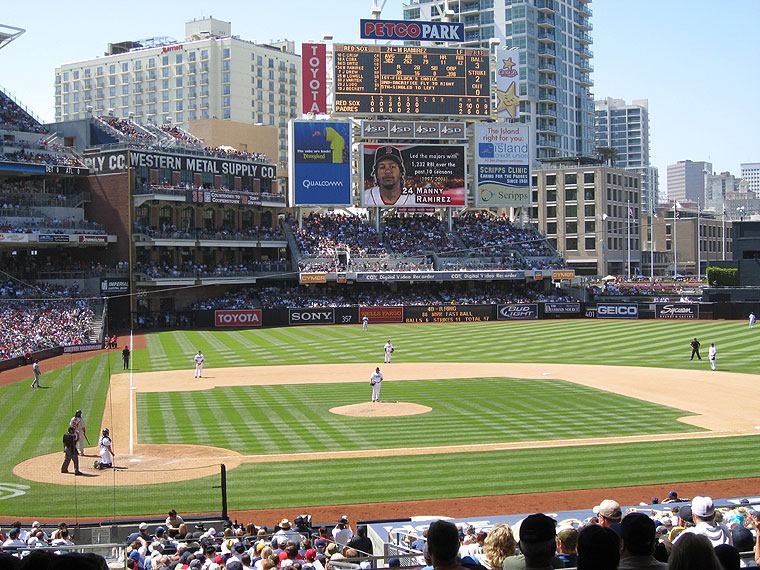
Petco Park Footnotes - Facts & Figures
| ||||||||||||||||||||||||||||||||||||||||
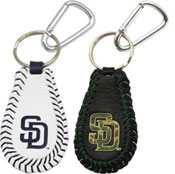
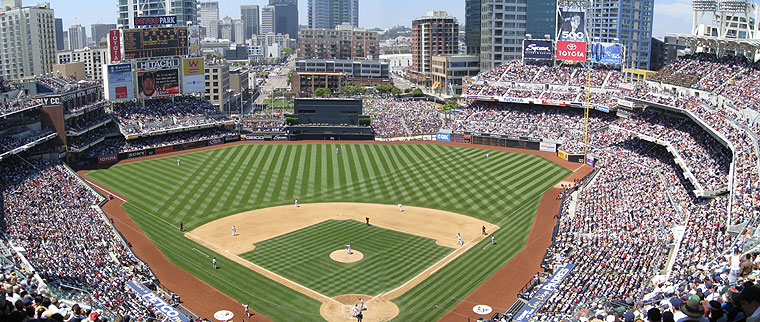
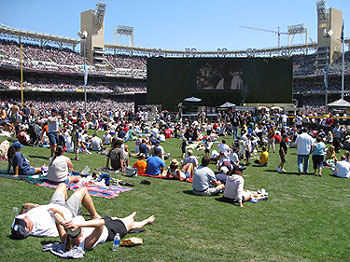 The Park at the Park is literally a 2.7-acre park within the confines of the ballpark in the outfield. When no games are being played, the Park at the Park serves as a free local park for area residents, but during the game it’s a hot spot for Padres fans and families, as a line of specialty concession stands and a mini wiffle ball field complement the large elevated grass berm.
The Park at the Park is literally a 2.7-acre park within the confines of the ballpark in the outfield. When no games are being played, the Park at the Park serves as a free local park for area residents, but during the game it’s a hot spot for Padres fans and families, as a line of specialty concession stands and a mini wiffle ball field complement the large elevated grass berm.
